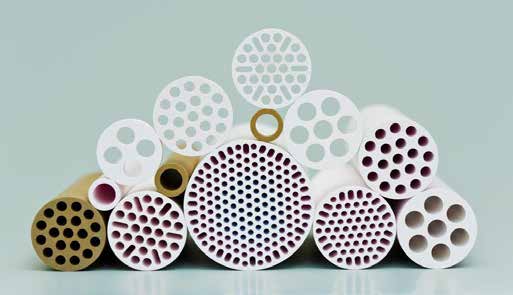Ceramic Membranes for Waste Water Management and Water Treatment
Water is indispensable as a foodstuff as well as for agricultural and industrial production. It is therefore paramount to use this important resource with care. In this context, the processing industry is in need of safe and fully multifunctional components for water treatment which are lightweight and allow integration into the companies’ existing supply infrastructures as well as into modern manufacturing concepts. In addition, these components should not only do without chemicals as operating materials, they should also be able to recover valuable constituents, concentrate any contaminants occurring in the process and break them down without residues.
While industrial processes are characterized by high salt loads and persistent organic residual materials from production and cleaning processes, which stand in the way of any effective closed-loop circulation, urban waste water treatment is more concerned with microbiological pollutants from pharmaceuticals, technical microplastics and nutrients, all in low concentration. Ceramic membranes provide technological solutions for the manifold issues that arise in water and waste water treatment. These are characterized by their high flow rates as well as by their reliability under extreme chemical and thermal conditions.
The objective of membrane development at Fraunhofer IKTS is to further improve separation efficiency and selectivity, to increase the membrane surface per ceramic element and to synthesize membranes for new separation tasks. In a group project, for example, it was possible to develop a separation limit of 200D that could be successfully implemented in the treatment of mercerization solution, in the cleaning and recycling of wash water from textile finishing and in the treatment of bleaching solutions.
 Fraunhofer Group for Materials and Components - Materials
Fraunhofer Group for Materials and Components - Materials